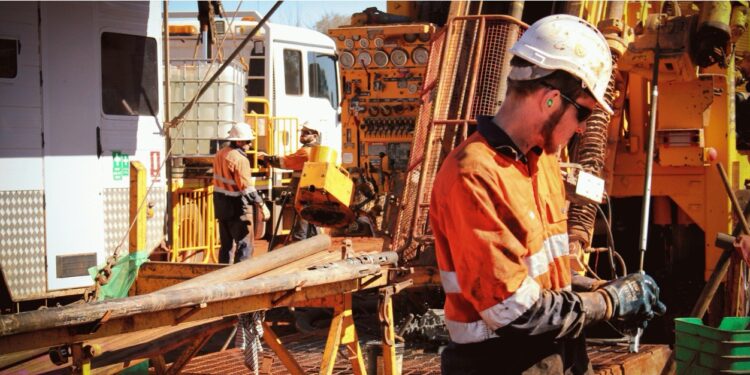St George Mining Limited (ASX: SGQ) has highlighted five large conceptual targets for nickel-copper-PGE mineralisation through a comprehensive project-wide review of the Mt Alexander Project in Western Australia.
The company’s exploration strategy is two-fold: firstly, to expand areas of known high-grade massive sulphide mineralisation intersected near surface at Mt Alexander and, secondly, at the same time test several large conceptual targets that have potential to deliver a step change in the scale of the Mt Alexander Project.
Executive Chairman, John Prineas, said following a comprehensive review of all available technical data for St George’s extensive holdings at Mt Alexander, five conceptual target areas with minimal or no previous drilling have been identified for priority testing.
Work on these conceptual target areas is planned to commence on site early in the June quarter. “Our systematic exploration continues to deliver encouraging results that support the potential for further significant mineralisation at Mt Alexander,” Mr Prineas said.
“With surface EM surveys having limited detection at depth, the seismic survey has been invaluable in mapping the host structures and revealing prospective areas for exploration.
“Further seismic surveys will assist with 3D structural interpretation and provide datasets needed to make more discoveries.
“The geological and structural interpretations continue to evolve with new exploration results. Our very experienced and committed technical team is also looking at new concepts and methods to provide additional information that can assist exploration targeting.
“With investor interest in quality nickel exploration opportunities continuing to grow enormously, we are energised by these new exploration initiatives which could help to add to the four shallow high-grade nickel-copper discoveries we have already made across the Cathedrals Belt.
“We are also looking forward to the initial diamond drilling programme at the Paterson Project, in the eastern Pilbara region of WA, that will commence soon.
“This programme will test a number of compelling drill targets for potential copper and gold mineralisation and deliver some exciting newsflow to complement our activities at Mt Alexander.
“With advanced exploration underway around the known high-grade deposits at the Cathedrals Belt and recognition of five large, conceptual targets at Mt Alexander – plus the commencement of diamond drilling at Paterson – this year is shaping as very productive for the Company and a very exciting time for St George shareholders.”
Geological Setting
The high-grade Ni-Cu-PGE mineralisation at Mt Alexander is structurally controlled, making an understanding of the structural setting critical to exploration targeting. The latest seismic data and drill results have provided important information on the structural setting of the Mt Alexander Project.
• 15km-long, east-northeast oriented Cathedrals Belt with mafic intrusions hosting Ni-Cu-PGE sulphides over a strike of more than 5km
• Mt Alexander greenstone belt trending north-south that hosts wide mafic-ultramafic sequences south of the Cathedrals Belt
• Extensive area of granite intrusion, north of the greenstone belt and east of the Ida Fault
• Near surface, high-grade deposits dipping north and interpreted to plunge to west and east
• Multiple structures parallel to Cathedrals Fault within ~5km-wide belt north of greenstone belt
• Ida Fault is a major craton-scale domain boundary, which may be linked to the mafic intrusions
Expansion Of Seismic Programme
A trial seismic survey completed in September 2021 comprised three north-south 2D seismic lines that covered an east-west strike of ~3km in the West End/Investigators area of the Cathedrals Belt.
The trial survey did not cover the Stricklands and Cathedrals Deposits where shallow high-grade massive nickel-copper sulphides have been discovered with mineralisation open at depth.
Interpretation of the trial seismic data with results from drilling the S1, S2 and S3 targets confirmed that seismic had successfully mapped the prospective structures that host the mineralised intrusions at the Project.
Following the success of the trial seismic survey, a further substantial seismic survey will be undertaken to investigate the conceptual targets outlined in this release and assist in generating a 3D model of the Cathedrals Belt and other structures.
Approximately eight seismic lines are planned, starting early in the June quarter. Depending on results, this survey could be expanded further to delineate favourable structures and contacts where massive sulphide mineralisation might have accumulated.
For further information please visit: https://stgm.com.au/












